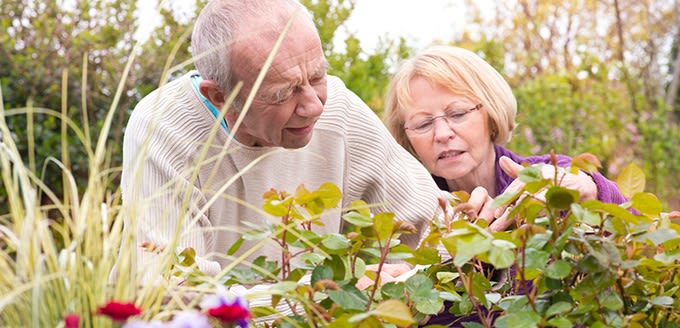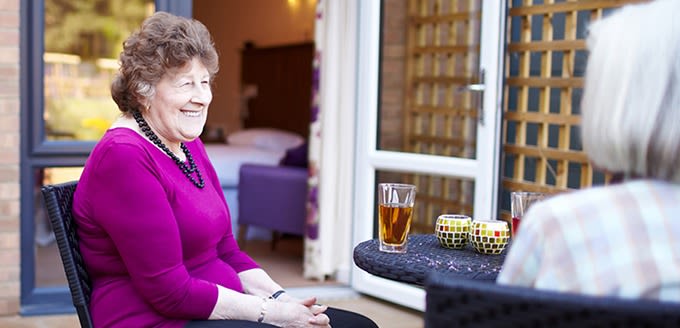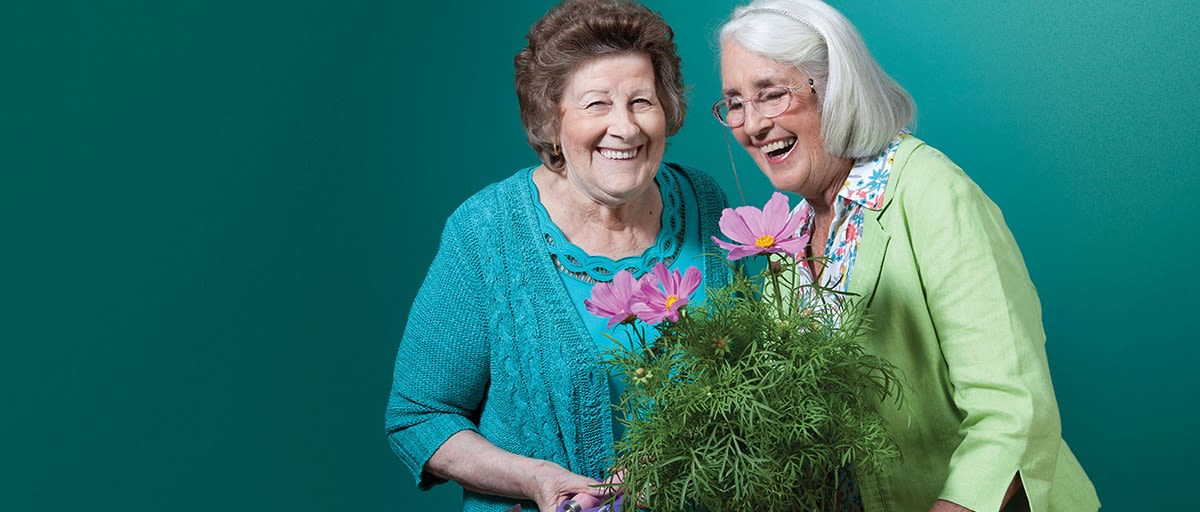With the economic prospects for the UK still fragile, care home providers find themselves caught between the rock of rising costs and increasing expectations, and the hard place of an increasingly competitive market. Steve Wilkins and Kristen Streten of design agency Design Culture look at the marketing challenges facing care home providers in today’s environment.
A mood of uncertainty and financial downturn has had a two-fold impact on the care homes market. For care home providers, they continue to face unprecedented budgetary pressures. Meanwhile the purchasers of care services – both public sector bodies and private individuals – have less spending power and are therefore more discerning in their choices. Against this background, and partly as a result of it, buyers are becoming more sophisticated, both in their needs and in their expectations of care home providers, as they seek to get maximum value for money.
Now more than ever, care home providers need to make sure they are marketing their services in the right way, in the right place and to the right people. And with the Government’s decision to cap the amount people must pay for their care likely to put further strain on already-stretched local authority budgets, providers need to start refining and updating their marketing strategy now, to ensure they are best placed to respond to and capitalise on evolving market opportunities.
Our work for organisations such as the NHS, Carebase and Picker Institute Europe has given us valuable insight into the ways in which strategic and intelligent marketing can drastically improve the prospects of those operating within the healthcare sector, where it is imperative to reach as wide an audience as possible.
The generation game
Marketing a care home has rarely been more challenging. The cross-generational target audience ranges from (relatively) younger decision-makers looking for care for their parents or older relatives, right through to ‘user-choosers’ researching their own or their partner’s provision. In addition, with people living longer and healthier lives than a generation and more ago, there’s the relatively new – but increasingly common – situation of 70-year olds looking for care for a 90-year old parent.
The diversity within any age group always makes it tricky for marketers to hone in on their target audience. When the age group is as large as the typical 45-90-year old care home decision-maker, it’s even trickier, with such a huge range of needs, aspirations, attitudes, mobility and tastes.
The audience is constantly changing and developing, too. A recent found that the number of people aged 60 or over is expected to pass the 20 million mark by 2030; by 2040, nearly one in four people in the UK will be aged 65 or over. The predictions are equally dramatic for the over 100’s with nearly one in five people currently in the UK expected to live to see their 100th birthday. It means that what works now is unlikely to work in 10 years’ time. The fifty year old today is likely to be very different to the 50 year old of 2040, in terms of their tastes, aspirations and lifestyles.
Unsurprisingly, most care homes recognise there is no one-size fits all approach to marketing their facilities to such a diverse audience. Each group has its own priorities, which is what makes the marketing challenge even more acute.
Making your voice heard
One thing today’s buyers do have in common, however, is a much more sophisticated – some say sceptical – approach to marketing, and more understanding of what to expect from a care home. Whether they are 40 or 80, they have been bombarded with marketing messages for most of their adult life; they’ve been targeted to excess by everything from insurance to holidays; they’ve read the stories about neglect and poor quality service in the care home sector; they’ve witnessed the rise of the internet putting more and more information at their fingertips.
It all makes for a higher barrier that care home providers must overcome with more effective, more persuasive marketing that says the right messages, accurately communicates their offering and meets the evolving needs of their audience.
Saga of success
Getting the message across to such a disparate target market is undeniably tough, but get it right and the rewards are high. Take Saga. Twenty years ago it was a by-word for a frumpy, dull, grey old age. No 50-year old would ever have envisaged themselves as a Saga customer. But thanks to some bold and insightful marketing and clever repositioning, Saga has transformed its image. It has become an icon for a kind of modern, older-but-not-elderly consumer. It has moved with the times, making its audience feel relevant, included and respected, rather than patronised or marginalised. People who happily use Saga today would probably not have seen themselves as future Saga users 10 or 20 years ago.

Define your core messages
The first step to success is not to inadvertently alienate a section of the target market. What appeals to a 50-year old is likely to be different to the preferences of a 75-year old, but both need to engage with the marketing message, without feeling patronised by outdated imagery or prim preconceptions. After all, today’s 55-year olds came of age at the height of the punk era, while their parents came of age just as the sixties started to swing.
Moreover, research has shown that few people make the decision on which care home to choose on their own. According to similar research conducted in 2010 by healthcare research consultancy Laing and Buisson, half of referrals for local authority funded care home placements come from hospital and community social workers, with friends or relatives being the next most common referrer. In the self-pay market, one-third of referrals are from friends and relatives, with a fifth being from social workers.
The most effective cross-generational marketing – like the 2015 John Lewis Christmas TV advert, the ‘Man on the Moon’– sensitively tap into universal themes and messages that appeal to more than one age group. It can be useful to look at how other organisations target the same audiences and learn from their success – insurance companies like Sunlife Direct have been very successful in targeting customers over 50, as has the National Trust and BUPA Healthcare, by using powerful, simple, and sensitive messages that appeal to a wide audience, combined with bright, modern imagery that reflects older people’s real lives and experiences.
The sensitivity of the messaging is crucial. The most effective marketing in this area is successful because it recognises the sensitivity of the issues it is dealing with, and addresses them head-on in a reassuring, supportive manner, rather than trying to gloss over them with images of shiny, happy older people in unrealistic situations, or worse, ignoring the sensitivity altogether.
Focus on facts
A decade ago, images of softly decorated rooms, well upholstered furniture and lush, vibrant communal gardens may have done the job for many care providers. But given the life-changing decision they are making, today’s consumers expect much more from care home marketing, including the facts about the care that is available, not only the facilities where they’ll receive it. General information about facilities needs to be backed-up with specific detail about the care on offer.
In addition, the fact that people are living longer and entering care homes when they are older means they are more likely to need nursing care or dementia care, as well as residential care. This means that specific information on the type and level of nursing and dementia support available in a care home may play a bigger role in decision-making than it has in the past.
The need to provide this level of information, however, needs to be balanced against the risk of putting people off. Readers need to be reassured that this support and these facilities are available, but without scaring them off by over-playing the negative aspects of ageing.

Invest in photography
Photography is often problematic when marketing care homes. Using photographs of actual residents is tricky, due to issues around privacy and longevity, so many brochures rely on shots of furnishings, rooms and facilities rather than people, or they use stock photography of stereotypical ‘young at heart silver surfers’.
Skimping on the photography is a false economy, however. Today’s sophisticated consumers can spot a stock photograph or an out-of-date room shot at fifty paces. Such corner-cutting doesn’t happen in other comparable sectors, why should it happen with care homes? For a sector that is all about the human touch, personal attention and community, it is vital the balance is right.
Choosing a care home is one of the most expensive decisions many people will ever make, and they expect the marketing materials they see to reflect that, which means investing in credible, professional photography, using actors if necessary to avoid endless shots of empty, lifeless rooms
Connecting with the local community
Developing a strong, positive profile in the local community is one of the most important areas of marketing for care homes to get right. The location of a care home – how close it is to friends and relatives – is a vital factor when people are deciding which home to choose.
Even at a local level, there will usually be a choice of care homes to choose between. Developing a positive reputation locally is therefore a critical step to winning referrals, both informally from within the community itself, and from local authority or NHS referrers.
A regular drop-in coffee morning or summer fair can be a good way for individual homes to raise their profiles and establish a positive reputation at a local level, as well as breaking down any perceived barriers with potential users, friends or family. Social media, such as Twitter and Facebook, can also be invaluable tools in building community connections and developing a positive local profile.
Wise words
There’s also the tone to consider – another area of marketing that has moved on tremendously over the past decade. It is not only about what you say, but how you say it. The words and phrases, the style and structure of sentences and paragraphs, the type of language used. It’s the difference between the friendly and casual ‘Please keep me cold. Gently pasteurised, like milk. Shake it up baby’ found on Innocent Drinks’ smoothies, and the more impersonal ‘Keep refrigerated. Store in upright position. Once opened consume within three days’ on a cheaper competitor product. Innocent has clearly thought long and hard about finding the right tone of voice for its audience, while the competitor products looks unlikely to have considered it at all.
Of course, selling smoothies is a long way from selling care homes. Arguably, however, it’s even more important for care homes to get it right, because the stakes are that much higher. Do they want to be perceived as modern, warm and friendly, or cold, impersonal and stiff? Older readers won’t appreciate being addressed like teenagers, but nor do they want to be transported back to a 1950s BBC service announcement. An analysis of the audience and how they expect to be addressed should be an integral part of a comprehensive marketing strategy. It might take a little longer, but it can make a tangible difference to how a brand is received.

A winning website
The importance of an up-to-date, credible website cannot be overstated. The web is most people’s first port of call when they’re researching a product or a service; even if they are just looking for a phone number or to order a brochure. It is so easy to click between different providers’ websites, if one is out of date, poorly designed, hard to navigate or difficult to read, it can leave a negative first impression that is hard to overturn. A poor website may mean visitors don’t order a brochure or, even worse, cross a provider off the list before they’ve even stepped through the door of a care home.
It is important to get the right balance, however, between the corporate brand and information on individual homes. The primary interest of most web users is likely to be specific information on a particular home. The structure of the website should reflect this, rather than presenting users with generic corporate information or burying the detail under layers of corporate messaging.
As well as being a key method for reaching the market, the web is a two-way channel. It gives providers the opportunity to track who is requesting brochures, see which pages are most visited, which information is most requested and how long people stay on certain pages. It is a fantastic research tool to build an online strategy around.
Web relaunch boosts enquiries and brochure requests
Carebase, a care home client of Design Culture, saw brochure requests double after its website was launched. In reviewing its web strategy, Carebase and Design Culture considered every aspect of the online experience – what users were looking for, the questions they may have, the actions it wanted users to take and how best to meet their needs.
The website was designed and developed with the aim of making the overall user experience as satisfying and smooth as possible, and ensuring that users could easily find the information they were looking for. For example, each care home was given its own individual URL, so users could find information on a specific home quickly, within the overall context of the Carebase site and so that the homes could be marketed at a local level using that web address.
Explains Maria Treadaway, marketing manager at Carebase, “One of the fundamental purposes of digital care home marketing is to achieve high volumes of web traffic and consistently increase the number of genuine enquiries or brochure requests received. The ultimate goal is that these translate in to high occupancy for the homes. Design Culture ensured we never lost sight of this when redesigning the new website. We sought to strike a balance between marketing Carebase and marketing our individual homes. The 100% increase in brochure requests is testament to our success in achieving these aims.”

To be, or not to be social
The elephant in the online room is social media. While it is undeniably true that most social media platforms are dominated by the under 35s, a recent Ofcom report found that more than 70% of UK adults have a social media profile, this is up from 59% in 2011. In addition, there are now just under 10 million Facebook users over 45 in the UK; the same age group also make up 26% of Twitter users
Social media needs to be given serious consideration as a marketing tool by care home providers. The chances are that in five year’s time, having a presence on the major social media networks will be as essential as a website is today. Even if a provider decides not to include it in their overall marketing strategy yet, they should be looking at it, learning from it, preparing for it, so any social media-related decisions are based on knowledge and not ignorance, and they can move quickly when the time is right.
Bear in mind, too, that social media is not only about communicating with potential purchasers. Some care home providers already use Twitter and Facebook for their corporate marketing and communications, such as press releases, recruitment and internal communications. It can also be a useful tool for community outreach initiatives, another way of opening doors to the local community and enabling friends and relations of residents to feel included and keep up to date with the latest news and events.
Power of video
Video content is another area where care home providers can create an impactful point of difference with their competitors online. It is becoming more common in other industries and has the potential to become a powerful communications tool in the care sector as well, through things like first-hand case studies, endorsements, video tours of facilities or interviews with staff.
The cost of video production has dropped considerably recently and it is being touted as the next big marketing tool over the next five years. Without doubt, it offers the opportunity for providers to make a powerful and lasting impact on their audience, over and above that of a brochure or website.
Looking to the future
Perhaps the only real certainty is that a successful marketing strategy can never stand still. What works now might not work next year. The audience is constantly hanging in terms of age, health, wealth, aspiration and expectations. A successful marketing strategy needs foresight, focus and investment. Getting it right is a huge challenge, but also a huge opportunity. One that is growing every year.


